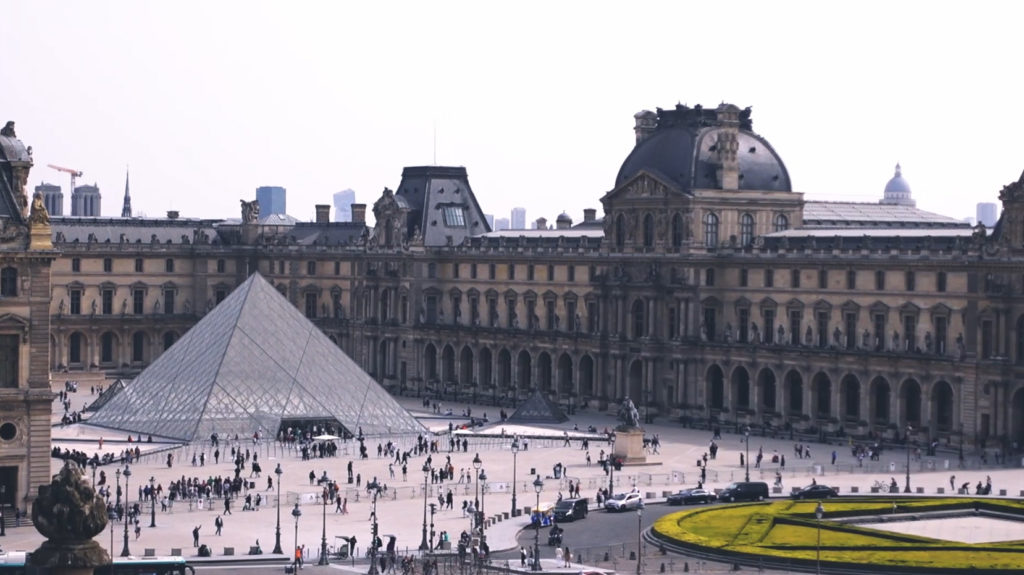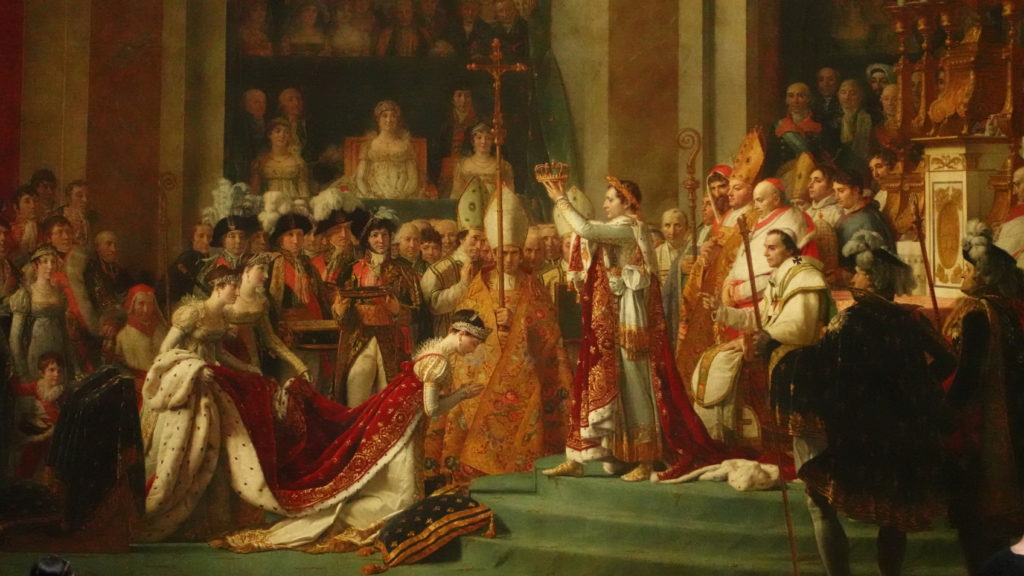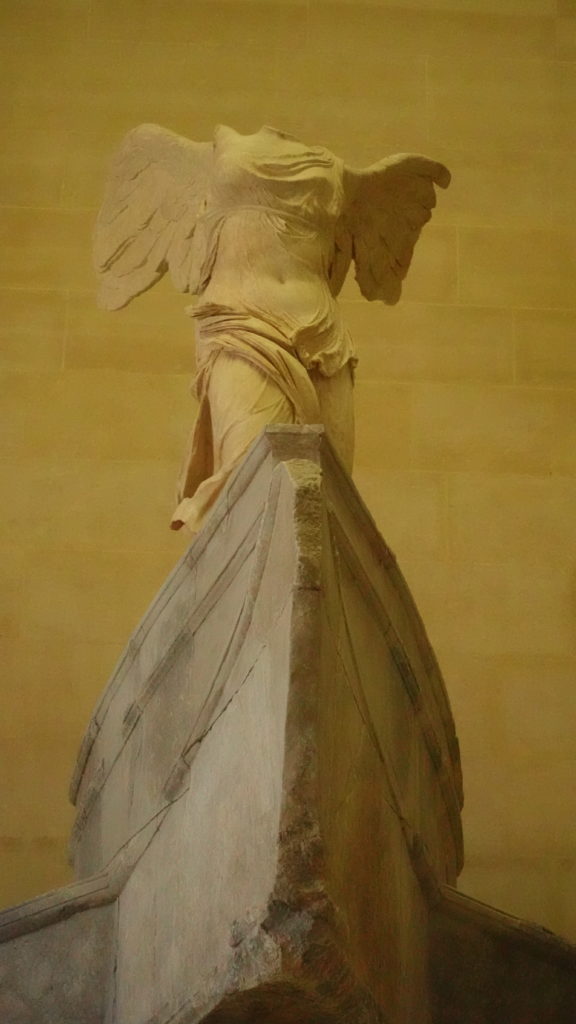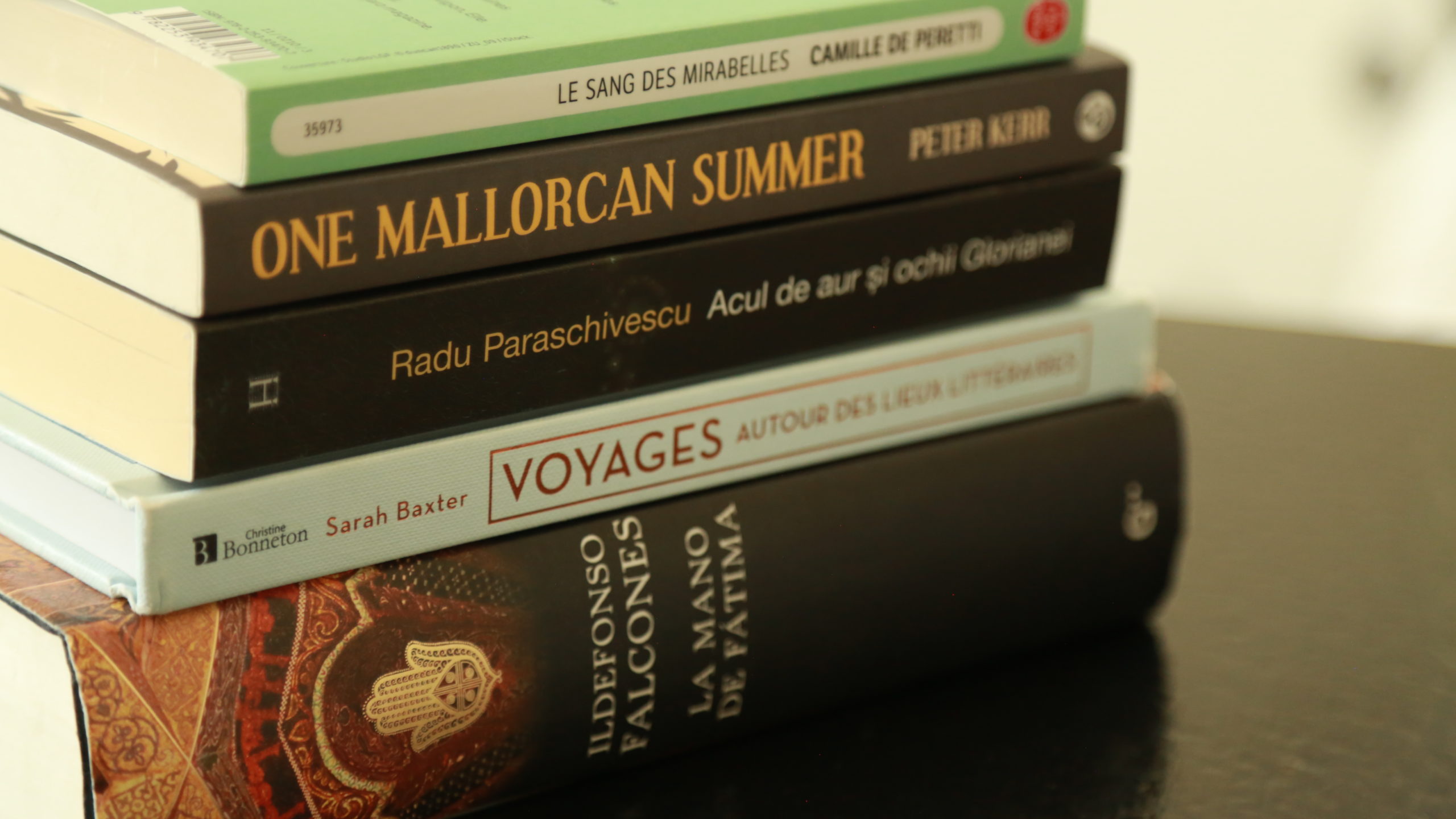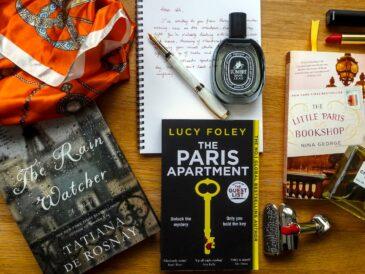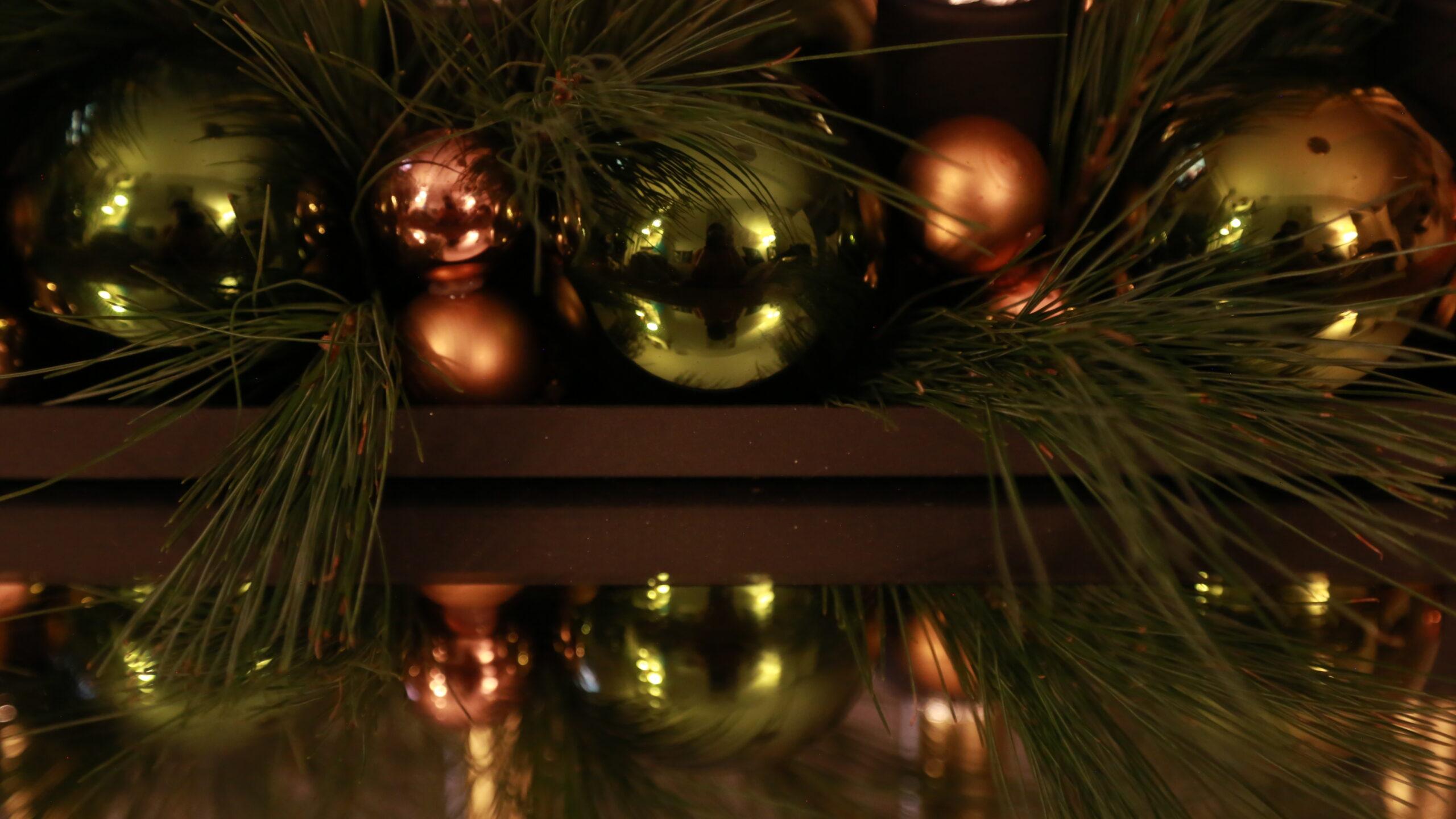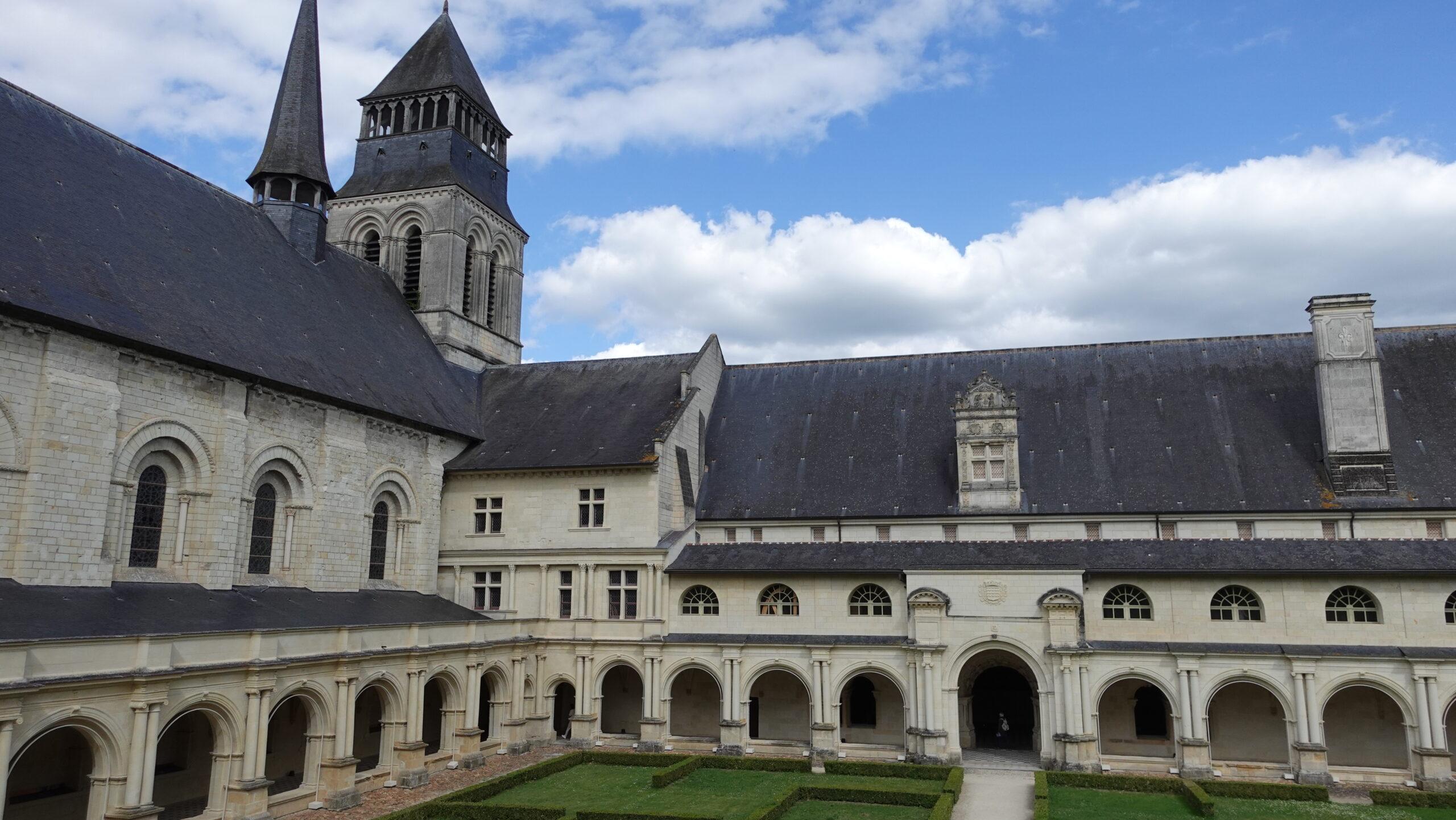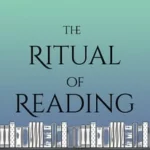The only way to understand painting is to go and look at it.And if out of a million visitors there is even one to whom art means something, that is enough to justify museums.
Pierre-Auguste Renoir
What is your oldest memory of museums ? I must have been around 9 or 10 and went on a city break with my parents to Bucharest.
Stating that a certain event is the one single most important moment in one’s becoming is almost impossible, but this journey comes pretty damn close for me. In just two days I attended my very first philharmonic concert, theater play and visited some of the most important museums in Romania.
If my understanding of all this might have been limited, my fascination was infinite. And thus, I became a museumgoer !
Why am I telling you all this ? Because today, I’m taking you on a Book Walk to the most visited museum in the world, to tell you about the beautiful essay of Jakuta Alikavazovic, Comme un ciel en nous, Like a sky inside of us.
What art lover has never thought of the thrilling possibility of spending a night alone in a famous museum ? And no, not in a Ben Stiller kind of way, but as a sensory adventure one could only dream of… The French independent editor Alina Gurdiel has created a collection over at Stock Publishing house called “Ma nuit au musée”, My night at the Museum. She regularly invites writers of different genres and backgrounds to spend a solitary night in a famous museum of the world, and write whatever comes up. The Picasso museum in Paris, La casa del Greco in Toledo, the Franco Maria Ricci museum in Parma, Punta della Dogana in Venice, the Thyssen museum in Madrid, and surely more to come. My most recent read however, was Jakuta Alikavazovic’s night spent at the Louvre in March 2020.
Born in Paris from Bosnian and Montenegrin parents, Jakuta Alikavazovic is what the French call “une femme de lettres”, a literate, wise woman, a scholar of modern times, what we most often reduce to the term “writer”. And if the literary form of a novel can sometimes simplify the thought process and hide the deeper meanings from the less experiences reader, the essay states right from the start : this book will make you reflect. Jakuta’s novels have received praise and prizes, there is no doubt about her story-telling talents, but this personal essay has a striking power in its vulnerability. And I’m not alone in thinking it, since she received the famous Médicis Essay Prize in 2021.
The Louvre is what her immigrant father called “the first French city where I felt at home”, a Universe of its own that she discovered week after week while visiting with her father and learning to look at art. Her intellectual father who landed in Paris at the age of 20, a refugee, an immigrant, an intellectual that learned to translate his thoughts in a new language, but felt at home in a Universal place of beauty like the Louvre, where languages are not necessary, where words come after feelings. Learning to BE in a museum is one of the subjects I loved in the essay. I’ve been in crowded places and in deserted halls, I’ve seen groups of tourists following along like they were ticking something off their to-do list, and I’ve seen the rare solitary one that detaches from the group, making space for a personal thought or just a moment of presence. Learning how to observe the living pulse of a museum is an apprenticeship. Luckily, a great museum has carefully thought about our experience as visitors, and if you follow the marked path, you already have a 50% chance of making valuable memories. The other 50% resides in your capacity to perceive the invisible, in your curiosity to discover the soul of a temple of the arts that lives between the steady subtle vibrations of its stones and our everflowing human energy we bring inside every time we step into the zone. And having the privilege of witnessing a museum after dark, the thoughts go beyond the surface :
Après une journée sous le soleil tapant, les pierres rendent la chaleur qu’elles ont absorbée, passivement en apparence, au fil des heures. La nuit, l’été remonte des sols, des murs, c’est comme un souffle trop longtemps retenu, une expiration de soulagement. Ce que rendent les colonnes, les dalles, les socles et les statues du Louvre quand tout le monde est parti, c’est d’abord la rumeur des pas, l’écho de toutes les paroles qui s’y sont dites dans la journée. C’est difficile à décrire ; comme si l’écume superficielle, chaleureuse, du jour et des visites remontait pour s’évaporer. Il faut un moment pour qu’un réel silence s’installe. C’est petit à petit qu’une salle, même déserte, se vide.
After a day under the beating sun, the stones release the heat they have absorbed, apparently passively, over the hours. At night, summer rises from the floors, from the walls, it’s like a breath held too long, an exhalation of relief. What the columns, slabs, pedestals and statues of the Louvre render when everyone has left is first of all the murmur of the footsteps, the echo of all the words that were said there during the day. It’s hard to describe; as if the superficial, warm froth of the day and of the visits was rising to evaporate. It takes a moment for a real silence to settle. It’s little by little that a hall, even deserted, becomes void.
One of the most important skills when visiting a museum, is what I would call a disposition for historical empathy. You cannot project your 21st century comforts and expectations on works of art that have travelled thousands of years, that have witnessed changes we can only grasp at the surface. This is the power of a museum, it teaches not only art, but history from the Neolithic to the Contemporary, and brings an elasticity of thought in our perception of life. The different levels of understanding, when looking at a painting for instance, are always fascinating. I think I notice colors first, then shapes, and only in third place do I think of the story. Either for figurative or abstract art. Then I start looking at details, from the frame to the painting technique, the brush strokes, the light source and focal points. And maybe in the end, I put them into historical perspective, when thinking about the artist and his influences, the art movement he was a part of, all the things I imagine art historians think of in the beginning, I leave at the end. But one thing I never thought of before, was how so many of the paintings in the Louvre, were created for very different viewing conditions :
Notre rapport aux œuvres a été complètement transformé par cette passion contemporaine du visible. Tant de restaurations de tableaux, au 20e siècle, n’ont pas tenu compte de la question du regard, de la question de la lumière. […] ces tableaux aux teintes ressuscitées m’ont souvent déçu. Souvent j’en préférais les descriptions lues, l’image que je m’en étais faite ; en les découvrant, décapés, je les trouvais criards et plats. Ils sont peut-être chimiquement, chromatiquement corrects – mais ils n’étaient pas faits pour être vus dans nos conditions. C’est peut-être la raison pour laquelle ils semblent à ce point crus. Sans nuances. Un magenta brûlant, un rose franc ne sont, n’étaient pas les mêmes à la clarté des chandelles et des torches.
[…]Les yeux pour lesquels ces tableaux ont été peints n’ont pas grandi dans l’éclat bleuté des écrans, des cristaux liquides, ni même dans celui de l’électricité. Les yeux pour lesquels ces tableaux ont été peints étaient habitués aux lumières vivantes, changeantes et capricieuses, des flammes. Ils étaient accoutumés au clair-obscur, et distinguaient sans doute bien d’autres nuances que nous, des nuances qui ont été noyés à jamais dans nos flots glorieux de lumière artificielle.Our relationship to artworks has been completely transformed by this contemporary passion for the visible. So many restorations of paintings, in the 20th century, did not take into account the question of the gaze, the question of light. […] these paintings with revived colors have disappointed me many times. Often I preferred the descriptions read, the image I had made of them; discovering them, scoured, I found them garish and flat. They may be chemically, chromatically correct – but they weren’t meant to be seen in our conditions. Maybe that’s why they seem so raw. Without shade. A burning magenta, a sharp pink are not, were not the same in the light of candles and torches.
[…] The eyes for which these images were painted did not grow in the blue light of screens, liquid crystals, or even electricity. The eyes for which these paintings were created were accustomed to the living, changing and temperamental light of the flames. They were accustomed to chiaroscuro, and could no doubt distinguish many shades other than ourselves, shades that have been forever drowned in our glorious floods of artificial light.
This paragraph is one of the reasons I decided to come back to the Louvre today. To experiment with my powers of imaginary time-travel, and experience this idea that has mesmerised me while reading.
I cannot end this without mentioning the many many reflections on the special status of immigrants, this time from the perspective of the intellectuals looking for exile. This is a powerful subject for me, and one I will develop more in depth another time, but I had to mention a quote of exceptional beauty, that can be taken out of the immigrant context, but that I have recognized in myself from that perspective :
Le vigile est venu vers moi. Il était très doux ; sa voix, du moins, l’était, comme l’est souvent celle des gens qui travaillent dans cette ville, la nuit. Il m’a demandé si j’étais l’écrivain, et cette question, encore aujourd’hui, me procure une certaine fierté ; fierté dont, tout de suite, j’ai honte ; et, si on ne sait pas toujours qui, au juste, écrit en soi, on sait toujours – du moins le sais-je, moi – qui en soi a honte. Une seule partie de vous peut écrire, une seule partie de vous peut être fière, mais la honte, c’est toute votre personne qui l’éprouve. La honte vous rassemble bien mieux que le reste.
The security guard came towards me. He was very gentle; his voice, at least, was, as is so often, the voice of the people who work in this city at night. He asked me if I was the writer, and this question, even today, gives me a certain pride; pride of which I am immediately ashamed; and, if one does not always know who, exactly, writes in oneself, one always knows – at least I know it – who in oneself is ashamed. Only one part of you can write, only one part of you can be proud, but shame is felt by your whole being. Shame brings you together much better than anything else.
Book Walks are my interpretation of some of my readings. As if the book invited me to discover something new, to get out of the cosy nest I’ve built for myself at home, and absorb new images, associate them with ideas, and expand my horizon. The series of nights at the museum is not yet translated into English, so take this as a challenge to maybe refresh your French. But if that is not an option, I am happy to have at least presented one of these unique books here, and who knows ? Maybe the concept will spread to other countries. It is a rare opportunity to have a literary perspective on art, an invitation I will always gladly accept.
Until next time, enjoy your reading and your Book Walks !

